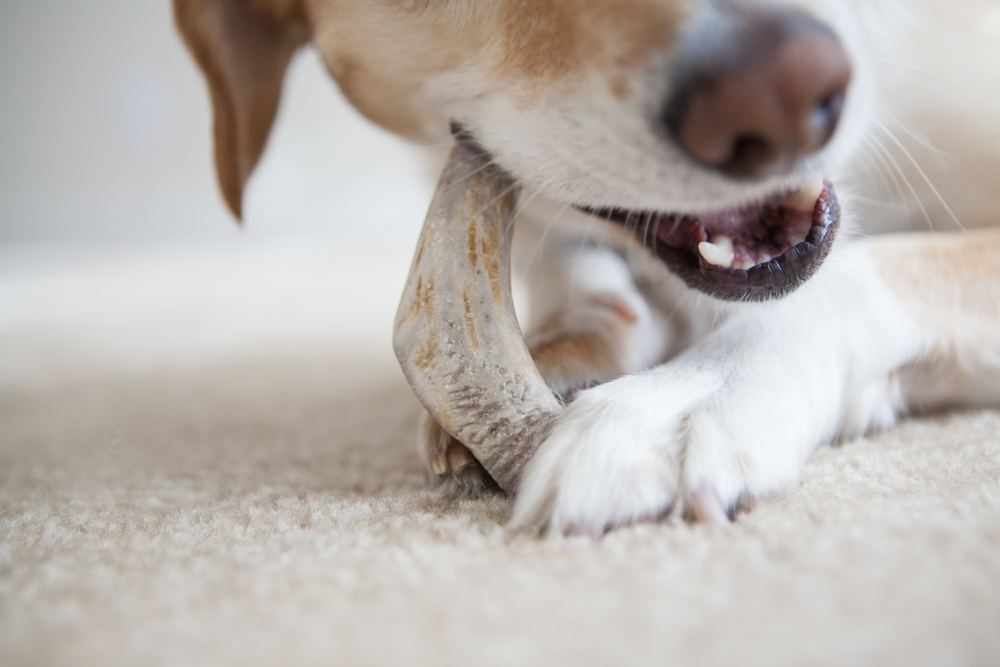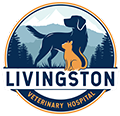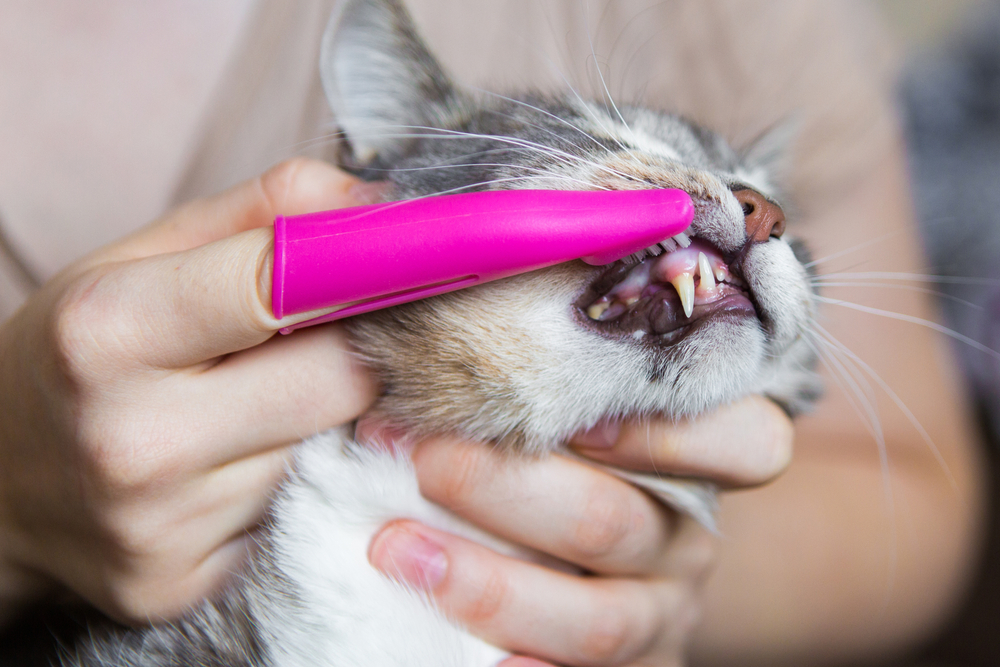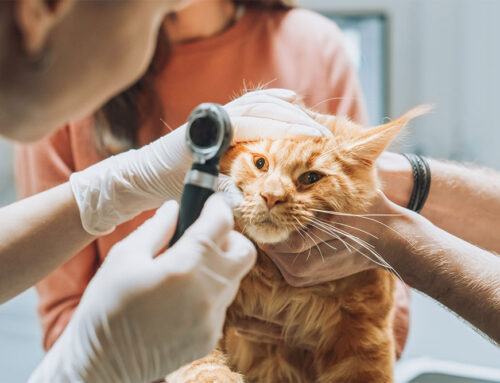Your pet’s dental health is important—so important, that the entire month of February is dedicated to spreading awareness about the issue. Yes—February is National Pet Dental Health Month, and to celebrate, our Livingston Veterinary Hospital team explains why your pet’s dental health matters, and how you can protect your pet from periodontal disease.
Use the mnemonic B.R.U.S.H to help rock your pet’s dental hygiene game.
B = Brush your pet’s teeth daily
Good oral hygiene is critical for your pet’s overall health, and daily toothbrushing is the best method for keeping their mouth clean. Ideally, you should begin brushing your pet’s teeth when they are young, but it is never too late to start. Follow these simple steps to polish your pet’s pearly whites:
- Purchase pet-friendly toothpaste — The fluoride in human toothpaste can harm your pet if swallowed, so purchase pet-specific toothpaste, which comes in a variety of tasty flavors that make the toothbrushing process more enjoyable for your pet.
- Choose the right toothbrush — Use a finger brush for hard-to-reach areas in pets with small mouths and soft-bristled children’s toothbrushes for large pets.
- Find a quiet spot — Select a quiet home area where you will not be interrupted, and to ensure the toothbrushing experience is calm and positive for your pet.
- Start slowly — Before brushing, offer your pet a taste of the toothpaste and gently wipe some under their lip so they get used to feeling toothpaste on their teeth. Once your pet accepts your finger swiping toothpaste along their teeth and gums, offer them a toothbrush with a small amount of toothpaste.
- Gently brush — Use a gentle brushing motion on all tooth surfaces, including the back molars, if possible. The inner surfaces facing the tongue are often relatively tartar-free, but can still build up plaque.
- Reward your pet — Praise and reward your pet for a job well done.
In addition to daily toothbrushing, you can help preserve your pet’s oral health with:
- Dental chews
- Dental treats
- Water or food additives
- Oral rinses, wipes, and sprays
- Prescription dental diets
R = Remember to schedule your pet’s dental exams
People require regular dentist visits for routine teeth cleaning to remain healthy—and pets do, too. Your pet’s regular wellness exam includes a thorough, essential oral exam, which helps your pet maintain good oral health and prevent dental problems. We may recommend a professional cleaning while your pet is anesthetized, along with dental X-rays, to allow us to look for the 60% of dental problems that exist under the gum line. A complete professional pet dental cleaning will include:
- Scaling tartar from the tooth surface, above and below the gum line
- Polishing each tooth to remove microscopic etchings created by scaling, where bacteria can adhere
- Probing the gum line for pockets that indicate periodontal disease
- Irrigating below the gum line to flush away bacteria and debris
- Rinsing the mouth with an antimicrobial solution
U = Understand dental disease in pets
Periodontal disease is one of the most common conditions that veterinarians see, and most pets older than age 3 have some degree of disease. However, many pet owners are unaware that the disease is so common—and painful. Without treatment, dental disease can lead to infection and loose teeth that can cause your pet not only significant pain, but also problems that extend far beyond their teeth. Potential problems caused by dental disease include:
- Kidney, heart, and liver damage — Bacteria from plaque and tartar buildup can leak into your pet’s bloodstream, damaging these essential organs.
- Tooth root infections — These infections occur most commonly in the large, three-rooted carnassial teeth on the upper jaw.
- Under-eye swelling — Tooth root abscesses can cause a pus-filled swelling below the eye that may be confused with an eye or facial problem.
S = Scan your pet’s mouth for dental disease signs
Your pet may not show obvious signs in the initial dental disease stages, because most pets are experts at masking pain. However, as the disease progress and the pain worsens, you may notice subtle changes, including:
- Drooling
- One-sided facial swelling
- Dropping food, or chewing on one side
- Lack of interest in toys and bones
- Bad breath
In addition to scanning for dental disease signs, inspect your pet’s teeth and mouth regularly to look for brown or yellow tartar buildup on the teeth, red, swollen, or bleeding gums, and broken or loose teeth. If your pet has any of these signs, schedule a dental evaluation with our veterinary team, so we can assess their dental health.
H = Hold off on hooves and antlers

When choosing a dental chew for your pet, look for products that carry the Veterinary Oral Health Council (VOHC) seal of approval, which guarantees the product will slow plaque and tartar accumulation. Never give your pet hard items, such as hooves, antlers, and bones, which can wear down your pet’s enamel or fracture their teeth.
Using B.R.U.S.H. to maintain your pet’s dental health will protect them from pain and severe dental-related health conditions. Get a jumpstart on your pet’s dental health in 2023—contact Livingston Veterinary Hospital to schedule your pet’s dental examination and professional dental cleaning as soon as possible.







Leave A Comment